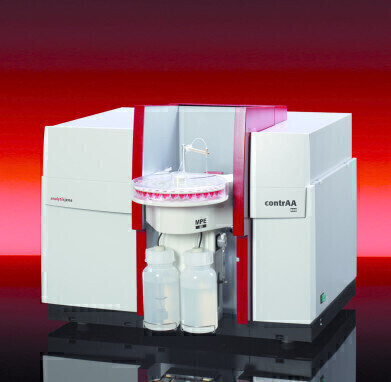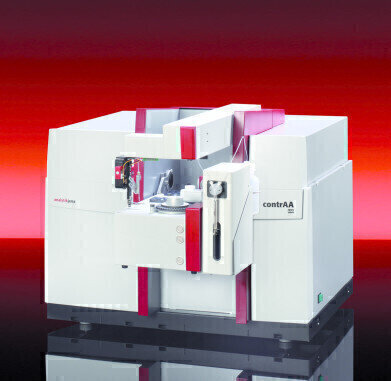-
 Fig. 1 : contrAA® 600 with autosampler for liquid samples
Fig. 1 : contrAA® 600 with autosampler for liquid samples -
 Fig. 2 : contrAA® 600 with autosampler for solid samples
Fig. 2 : contrAA® 600 with autosampler for solid samples
Chromatography
The New contrAA® 600 - High Resolution Continuum Source AAS for the Graphite Furnace Technique
Sep 07 2011
With the High Resolution Continuum Source Atomic Absorption Spectrometer (HR-CS AAS) contrAA® 600, Analytik Jena AG is now offering a pure graphite furnace system (GF) with all of the benefits of the HR-CS AAS:
- Just one light source for all elements
- Unique simultaneous background correction
- New information content
- Fast! Simple! Efficient!
With the new contrAA® 600,the contrAA® family is now complete. The family already includes the contrAA® 300 for flame and hydride technique and the contrAA® 700, a compact, all-round system for flame, hydride and graphite furnace technique.
With a xenon lamp as a continuous radiation source, the entire wavelength range relevant for AAS is immediately available in the HR-CS AAS. Molecule bands can now be assessed as well. This allows additional elements, such as sulphur, phosphorus or fluorine to be analysed in the blink of an eye.
Functionality comes first with the contrAA® 600. Fully automated processes and intelligent accessories optimise the analysis process. The transversely heated graphite tube furnace and the temperature control ensure optimal atomisation conditions, precise results and a long service life of the graphite tubes.
Take advantage of the benefits of the HR-CS GF AAS in combination with the direct solid analysis technique or the HydrEA technique of Analytik Jena AG.
Solid analysis technique –solid AA®
Solid samples are analysed directly, without elaborate preparations of the samples with the help of the solid analysis technique:
- Analysis of the original sample
- Best choice for routine application
- Immediate results
- Extremely high sensitivity
HydrEA
The combination of hydride and graphite tube techniques opens up completely new perspectives in the detection of hydride forming elements, such as arsenic or selenium:
- Best detection limits
- Matrix-free analysis
- Minimisation of contamination problems
Digital Edition
International Labmate 49.6 - Sept 2024
September 2024
Chromatography Articles - HPLC gradient validation using non-invasive flowmeters Mass Spectrometry & Spectroscopy Articles - From R&D to QC, making NMR accessible for everyone: Putting NMR...
View all digital editions
Events
Oct 30 2024 Birmingham, UK
Oct 30 2024 Manchester, UK
Nov 11 2024 Dusseldorf, Germany
Nov 12 2024 Cologne, Germany
Nov 12 2024 Tel Aviv, Israel


















